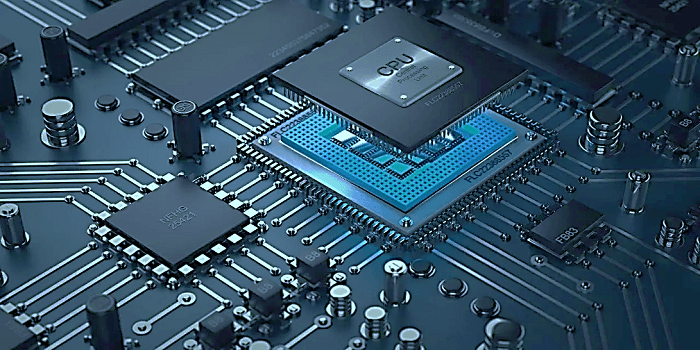Advantages and Disadvantages of Embedded SystemEmbedded systems, also known as integrated systems, are mashups of hardware and software created to accomplish a certain goal. In other terms, an embedded system is a system built around a microcontroller and intended to control a certain set of tasks. Small chips called microcontrollers perform comparable tasks as computer processors. It contains a built-in processor, memory, and programmable peripherals for input and output. Put another way; an embedded computer is a tiny, programmable computer installed inside a mechanical or electrical device to enable the electrical equipment to carry out certain duties or jobs automatically. An embedded system may function alone or as a component of a bigger system. Typically, it is a component of a larger system that is intended to carry out or regulate a certain function. Our everyday lives now include the usage of embedded systems, whether it is in our smart watches, automatic washing machines, digital cameras, video game consoles, DVD players, printers, or vehicles. utilised as a system. A straightforward illustration of this is the Fire Alarm Device, an embedded system whose sole function is to detect smoke. 
Types of Embedded SystemBased on their functional and performance requirements, embedded systems are divided into four types, which are as follows: 1. Standalone Embedded Systems Host systems like computers are not necessary for standalone embedded devices. It can complete its own tasks; it accepts analog or digital input from the input port, processes it, does calculations and data transformations, and then returns the resulting data through the attached device, which either drives, controls, or displays the data. MP3 players, digital cameras, video game consoles, microwaves, and other devices are examples of stand-alone embedded systems. 2. Real-time Embedded System They follow rigorous deadlines and are employed when a given work must be completed within a certain amount of time. Soft and hard real-time systems are separated out of these. Hard real-time systems, for instance, are used in industrial machinery when stringent deadlines must be met. A system that returns a needed o/p at a certain moment is referred to as a real-time embedded system. Different embedded system types adhere to a deadline for job fulfilment. Soft and hard real-time systems are the two categories into which real-time embedded systems are divided. 3. Embedded Systems That Are Networked To access the resources, this kind of embedded device is connected to a network. The connected network might be a LAN, WAN, or Internet. Any type of connection, including wired and wireless, is possible. This subset of embedded systems is thought to be the one with the quickest rate of development right now. A system known as an embedded web server connects all embedded devices to a web server, allowing a web browser to view and manage all of the embedded devices in the system. All the sensors are interconnected and use the TCP/IP protocol in the home security system Xplan for LAN network embedded systems. 4. Mobile Embedded Systems Portable embedded devices, including cell phones, mobiles, digital cameras, MP3 players, personal digital assistants, etc., employ mobile embedded systems. Memory and other resources are these gadgets' main drawbacks. The Fundamental Elements of Embedded SystemEmbedded systems typically consist of three parts, which are as follows: 1. Hardware: The main component, also known as a microcontroller, microprocessor, or chip, is one of the several components found on the printed circuit board (PCB). The embedded system's microprocessor or microcontroller is dependent on the entire application. Microprocessors are utilised when the system must be handled in a more complicated way instead of microcontrollers, which are often employed for modest jobs. More than 90% of embedded systems employ microcontrollers. The microcontroller contains its own CPU, RAM, and ROM. 2. Software: It is sometimes referred to as mostly application software since, in an embedded system, a microcontroller and microprocessor are programmed specifically for a given application. Application software is referred to as such since the program burnt into the microcontroller is created with a specific objective in mind. As an illustration, the microprocessor placed in the household induction cooker particularly regulates the voltage, shows it, and is used to set the timer. The washing machine's microprocessor performs the timing function. In this manner, the software that must be loaded into each machine's microcontroller depends on how it will be used. 3. Operating System: It is also software, but it serves a different purpose than application software. Operating systems are not used by smaller embedded system types. However, the embedded system's operating system is utilised where the work is challenging and several operations must be completed. The operating system's job is to get everything working together and get the application software to function as intended. It must be completed, and the precise result must be delivered. 4. Most embedded systems run on a Real-Time Operating System, which means that no process should go past either the logical or timing deadlines. There are also two types of real-time operating systems.
Features of Embedded SystemsThe typical function of an embedded system is a single, ongoing job. For instance, a printer simply prints documents.
Advantages of Embedded SystemsThe following are some benefits of employing embedded systems:
Disadvantages of Embedded SystemsAdditionally, there are a few drawbacks of employing embedded systems:
Where Are Embedded Systems Used?Embedded systems are used in a wide range of applications, including:
Next TopicAdvantages and Disadvantages of IFRS
|
 For Videos Join Our Youtube Channel: Join Now
For Videos Join Our Youtube Channel: Join Now
Feedback
- Send your Feedback to [email protected]
Help Others, Please Share










